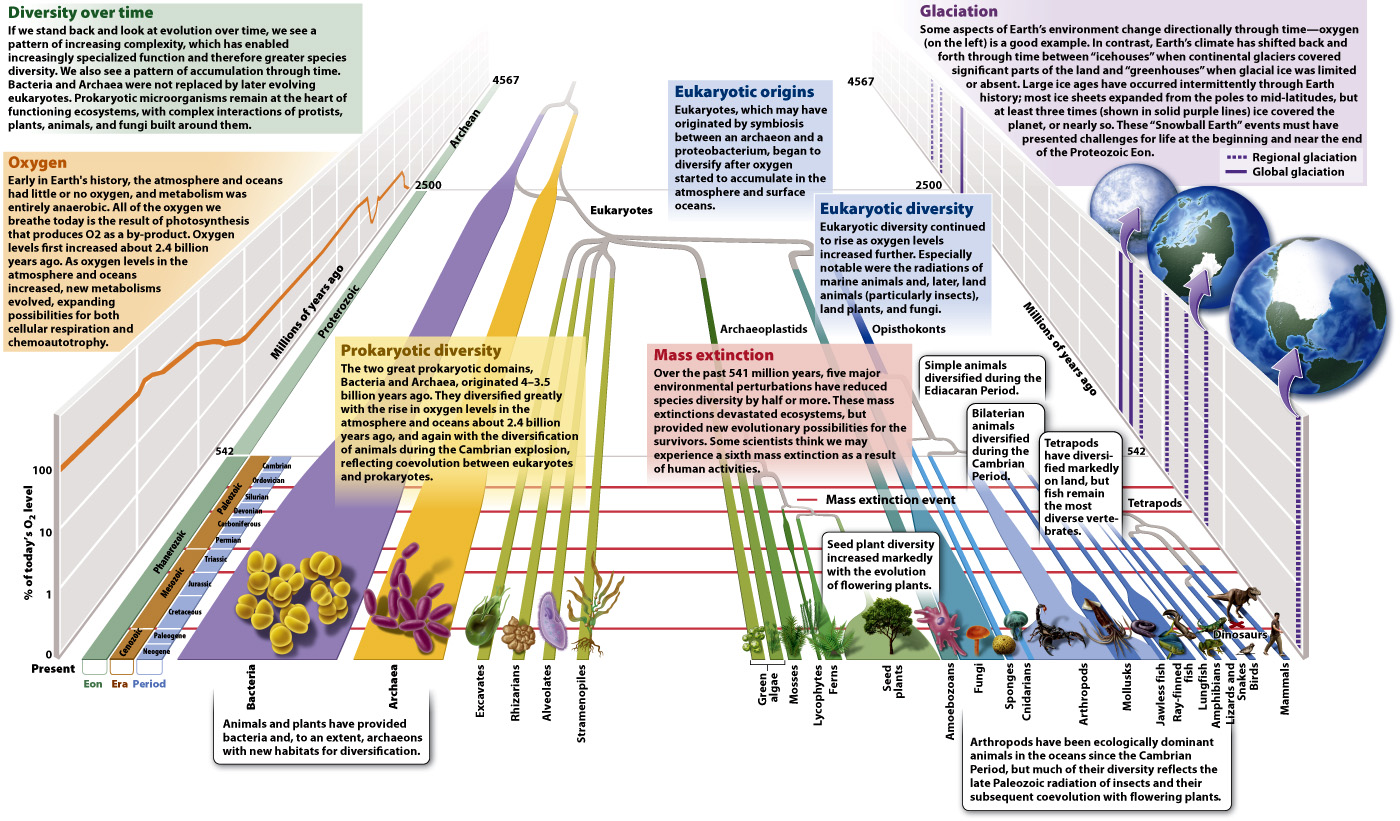Animals began to colonize the land 420 million years ago.
The colonization of land by animals began only after plants had established themselves there. Land plants evolved during the Ordovician Period, about 460 million years ago, and arthropods followed onto the land by the time of the Silurian Period, about 420 million years ago, especially chelicerates that included the ancestors of spiders, mites, and scorpions. Insects, descended from crustacean ancestors that independently gained access to the land surface, appeared at about the same time.
The radiation of the major groups of insects, however, began 360 million years ago with a marked diversification of dragonflies and the ancestors of cockroaches and grasshoppers. Some of the dragonfly-
Flies, beetles, bees, wasps, butterflies, and moths radiated later, beginning in the early Mesozoic Era. Their rise in diversity parallels that of the flowering plants and reflects coevolution of flowering plants and the insects that both pollinate and feed on them.
Tetrapod fossils first appear in sedimentary rocks deposited near the end of the Devonian Period, about the same time as the early insect radiations 360 million years ago. As discussed in Chapter 23, the fossil record documents in some detail the shifts in skull, trunk, and limb morphology that allowed vertebrate animals to colonize land. These include the evolution of muscled, articulated legs from fins, together with a set of strong, articulated digits where the limbs meet the ground; lungs and a rib cage to support the muscles that control breathing; and an erect, elevated head with eyes oriented for forward vision. The appearance of amphibians and then reptiles follows the predictions of phylogenies based on comparative biology.
Mass extinction has influenced evolution on land as well as in the sea. As new groups of invertebrate animals spread through Triassic oceans, new types of tetrapod diversified on land, including small bipedal reptiles that gave rise to the most remarkable animals ever to walk on land: the dinosaurs. From their beginnings about 210 million years ago, dinosaurs radiated to produce many hundreds of species, dominating terrestrial ecosystems until the end of the Cretaceous Period, 66 million years ago, when another mass extinction, caused by a catastrophic asteroid impact, eliminated nearly all dinosaur species (Chapter 1). We say “nearly all” because the fossil record documents the evolutionary divergence of birds from a specific subgroup of dinosaurs, about 150 million years ago.
Mammals have been the dominant vertebrates in most terrestrial ecosystems since the extinction of dinosaurs, but the group originated much earlier, at least 210 million years ago. During the age of dinosaurs, most mammals were small nocturnal or tree-
We summarize the biological diversity of all organisms, including animals, along with a timeline of Earth’s history, in Fig. 44.42.
VISUAL SYNTHESIS
